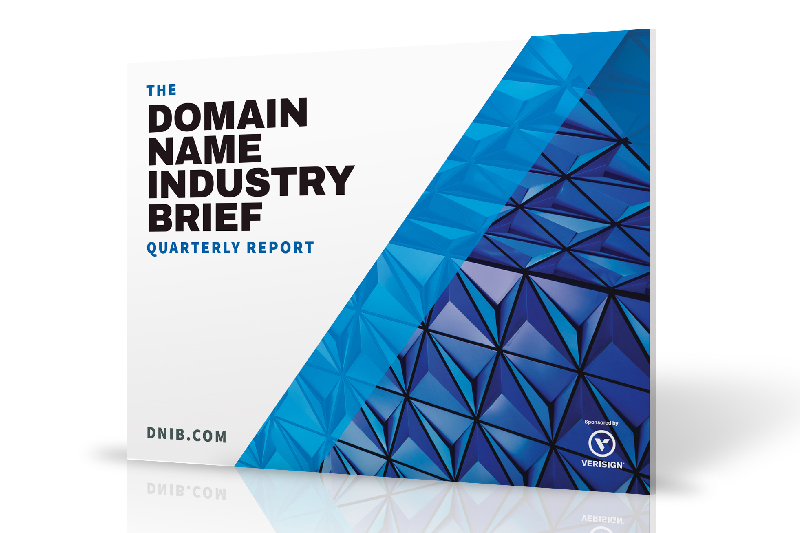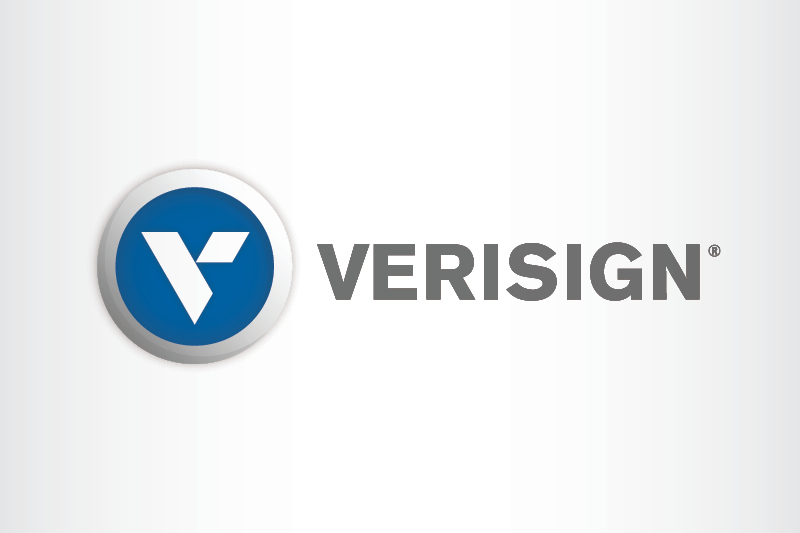
Preparing DNSSEC for the Post-Quantum Era
The Domain Name System Security Extensions (DNSSEC) help protect the integrity of DNS data, supporting both online navigation and other uses of domain names as identifiers in applications. In the time since DNSSEC was first introduced in 2005, both the RSA algorithm and elliptic curve cryptography have served as the primary signature algorithms for DNSSEC. But with the potential of large-scale quantum computing on the horizon, there may soon come a time when those algorithms no longer suffice.
(more…)
Domain Name Industry Brief Quarterly Report: DNIB.Com Announces 378.5 Million Domain Name Registrations in the Third Quarter Of 2025
Today, the latest issue of The Domain Name Industry Brief Quarterly Report was released by DNIB.com, showing the third quarter of 2025 closed with 378.5 million domain name registrations across all top-level domains (TLDs), an increase of 6.8 million domain name registrations, or 1.8% compared to the second quarter of 2025. Domain name registrations increased by 16.2 million, or 4.5%, year over year.
(more…)
Domain Name Industry Brief Quarterly Report: DNIB.com Announces 371.7 Million Domain Name Registrations in the Second Quarter of 2025
Today, the latest issue of The Domain Name Industry Brief Quarterly Report was released by DNIB.com, showing the second quarter of 2025 closed with 371.7 million domain name registrations across all top-level domains (TLDs), an increase of 3.3 million domain name registrations, or 0.9% compared to the first quarter of 2025. Domain name registrations increased by 9.3 million, or 2.6%, year over year.
(more…)
Celebrating Verisign CTO Burt Kaliski’s Lifetime Achievement Award
Last month, the RSA Conference – one of the world’s largest and most influential forums on cybersecurity and cryptography – honored our colleague, Verisign Chief Technology Officer Burt Kaliski, with a Lifetime Achievement Award for his enduring and significant contribution to the advancement of the cybersecurity industry and cryptography.
(more…)
Domain Name Industry Brief Quarterly Report: DNIB.com Announces 368.4 Million Domain Name Registrations in the First Quarter of 2025
Today, the latest issue of The Domain Name Industry Brief Quarterly Report was released by DNIB.com, showing the first quarter of 2025 closed with 368.4 million domain name registrations across all top-level domains (TLDs), an increase of 4.2 million domain name registrations, or 1.1% compared to the fourth quarter of 2024. Domain name registrations increased by 6.1 million, or 1.7%, year over year.
(more…)
Celebrating 40 Years of .Com
Last month marked 40 years since the registration of the world’s first ever .com domain name – symbolics.com – in March 1985. It’s a time to reflect both on the role .com has played in the evolution and growth of the internet over the past 40 years, and on the importance of ensuring that .com remains secure, stable, and resilient for the billions of people who rely on it every day.
(more…)
The 2024-2026 Root Zone KSK Rollover: Initial Observations and Early Trends
On Jan. 11, 2025, Verisign supported the Internet Corporation for Assigned Names and Numbers (ICANN) in taking a major step to ensure the continued security, stability, and resiliency of the Domain Name System (DNS). While imperceptible to most users, this action – specifically, the introduction of a new Domain Name System Security Extensions (DNSSEC) Key Signing Key (KSK) in the root zone – is the next step of a multi-year-long process to change, or “roll,” the cryptographic key that secures the root of the DNS. In this blog post, we’ll go into more detail about what this means and what observations we can make about the new key, which we refer to as “KSK-2024.”1
(more…)
Domain Name Industry Brief Quarterly Report: DNIB.com Announces 364.3 Million Domain Name Registrations in the Fourth Quarter of 2024
Today, the latest issue of The Domain Name Industry Brief Quarterly Report was released by DNIB.com, showing the fourth quarter of 2024 closed with 364.3 million domain name registrations across all top-level domains (TLDs), an increase of 2.0 million domain name registrations, or 0.5% compared to the third quarter of 2024. Domain name registrations increased by 4.4 million, or 1.2%, year over year.
(more…)
Domain Name Industry Brief Quarterly Report: DNIB.com Announces 362.3 Million Domain Name Registrations in the Third Quarter of 2024
Today, the latest issue of The Domain Name Industry Brief Quarterly Report was released by DNIB.com, showing the third quarter of 2024 closed with 362.3 million domain name registrations across all top-level domains (TLDs), a decrease of 0.1 million domain name registrations, or less than 0.05%, compared to the second quarter of 2024. Domain name registrations increased by 3.0 million, or 0.8%, year over year.
(more…)
Verisign and ICANN Renew Root Zone Maintainer Service Agreement
On October 20th, ICANN and Verisign renewed the agreement under which Verisign will continue to act as Root Zone Maintainer for the Domain Name System (DNS) for another 8-year term. The Root Zone sits atop the hierarchical architecture of the DNS and is essential to virtually all internet navigation, acting as the dynamic, cryptographically secure, global directory of all top-level domains that exist in the DNS. The Root Zone Maintainer is a unique role that ensures the cryptographic signing and publication of the Root Zone no less than once a day, without which, navigation on the internet would be impossible.
(more…)